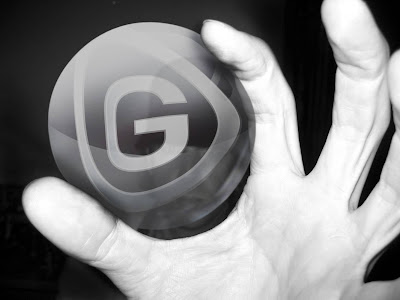
Did you know our GameStorm method solves problems? And not only that – it generates actionable ideas that lead to great achievements, executed by the very same professionals that worked on them! How much more engagement do you need than moving people in directions they feel is the right way? We have been experiencing great results since the introduction of the GameStorm in 2011. And the cool part is, we can anonymously share some great ideas on some generic challenges that clients (organizations) might face.
Take employee involvement and training in retail for instance. One of our retail clients described their objective in 2014 as follows: “Implement effective hr tactics in order to have flexible use of our employees”. The challenges that retailers face and various teams defined during the GameStorm session where (amongst others):
- Coordination of training during the day time work
- Helping other employees to level up their game
- Finding the right people for the right positions you have to fill
Now these challenges are not unique. As a matter a fact, we faced the same challenges when I used to work as a Channel Marketing Manager for Diesel. But these days, these challenges have a much bigger impact on your business playground and – in the end – your P&L than in 2010. It’s do or die these days…
(Destructive) Behavior that was chosen and proven to keep these challenges alive are (amongst others):
- No pep talks [on challenge 1]
- No relationship with the team mates [on challenge 1]
- Not taking time to develop people, in other words: rushing the training [on challenge 1]
Possibly due to the digital era we live in, even in a store, people do not build up a relation anymore (point 2), neither do they do motivational speeches or ‘pep-talks’ to inspire and stimulate each other. Especially in difficult times it can be highly effective to discuss the elephant in the room, give it a name and cut it in pieces (not literally of course). Because not talking about the elephant in the room will not scare it away – acting up will! And as for the third action: not taking time to develop people, I have a brilliant comment I once read. The CFO says: “What if we develop our employees and they leave our company…?” CEO says: “What if we don’t develop them and they will stay working in our organization?!” If you want to become (or remain) a game changer on your playground these days you have to continuously invest in your human capital. If you don’t you have already lost the battle from online webshops like Ali Baba, Amazon and others. But fortunately for us, the GameStorm also let’s you look on the positive side, defining constructive behavior to overcome the chosen challenges.
Ways to overcome this challenge (Coordination of training during day time work), that were chosen during the GameStorm session were:
- Use active feedback to improve your training every session over and over again
- Let your experts (in-store) lead training sessions 1 on 1
- Write don a game plan for the day or week, within to do’s: who gets his training at what time on which priorities
I cannot stress it enough and I have done that in my most recent book, but there is only 1 way (really just one), to improve over and over again and it is: feedback. The way players learn in games is thanks to feedback. Take the game Pac-Man. You are a yellow guy, eating cookies in a maze. The more cookies you eat, the more points you get (feedback) and the cookies disappear (feedback). If you eat a ‘special’ cooky (inspired by the Dutch I presume), recognizable because of the flickering (feedback), you can eat the ghosts that hunt you. Their colour changes (feedback) as soon as you eat a special cooky. If you kill a ghost, they change into flickering eyes and you see a score (200, 400, 800, 1600 – all feedback)… Need I continue to explain how important feedback is in games? The same goes for real-life… Humans can only improve by giving feedback, but we are really bad at giving motivational feedback. This is why we developed a game for that in 2016 for a big red mobile phone carrier (project to be disclosed soon). What I learned about giving feedback is: be authentic, be critically honest and always end positive with a plan of actions to be taken. For all I care: use the GameStorm structure! In a (really tiny) nutshell: What can we agree upon that you will do in the future, what did you do that did not work (in my opinion), what are you planning on improving in the future (or which suggestions do I have for you), so we can progress…?
A lot of retail organizations are afraid to ‘waste time’ on training, but the people in your store are the only – and I repeat the only – relevant discriminating factor for consumers these days that can persuade us into buying things – apart from great design (which plays with our sub-conscious). It is the people in your store that can make a difference. Not the product, not the price, not the place (location, location, location = web these days – wake up!), nor your promotional (mostly bull shit – and we recognize it) ad-campaign…
It is people and their actions that influence me in buying or leaving. And actually I strongly believe you cannot sell products to people, you have to let people decide to buy…
So don’t book a ticket to our GameStorm Trooper Training, we are not selling this product, you can only buy into it… 😉 More information can be found here should you be interested…
Tags: gamification
Posted in Bart Hufen, BrandNewGame, GameStorm, Gaming research, Retail | 1 Comment »




